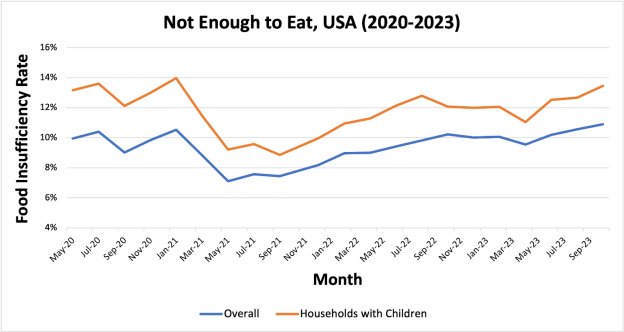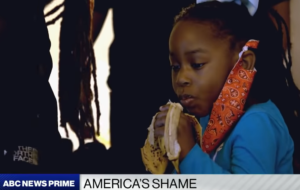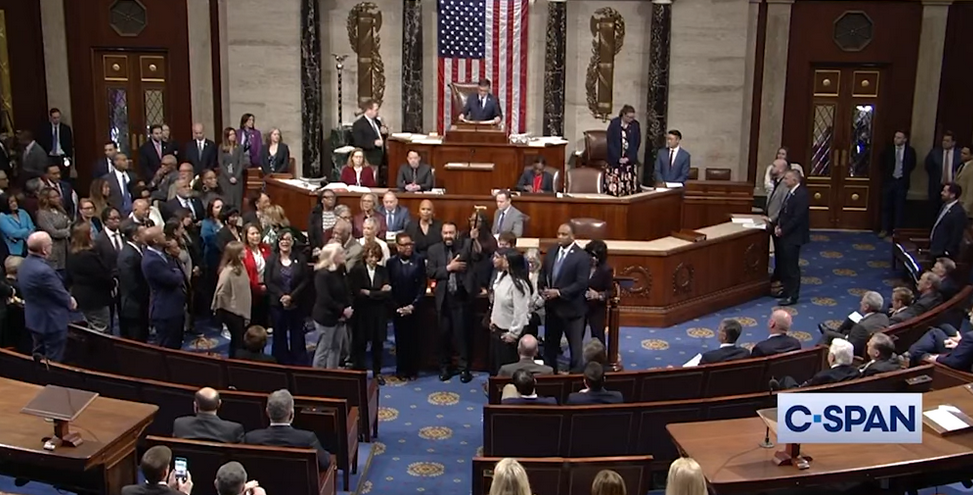Photos: YouTube
The number of Americans without enough food over a seven-day period was an average of 40% higher in September and October of 2023 than in September and October of 2021, according to a report released today by the nonprofit group Hunger Free America, based on an analysis of federal data.

Over that time period, the number of people without enough food increased from 19.7 million to 27.8 million nationwide.
Hunger Free America attributes the surge in food insecurity to the expiration of the expanded Child Tax Credit and universal school meals. Many federal benefit increases have either gone away entirely, or are being ramped down, even as prices for food, rent, healthcare, and fuel continue to soar.
Said Joel Berg, CEO of Hunger Free America, “This report should be a jarring wake up call for our federal, state, and local leaders.”

According to the USDA food insecurity data – a different way of measuring food hardship analyzed by Hunger Free America – 11.9% of Americans, or 38.8 million people, were found to live in food insecure households over the course of a whole year, as averaged for the years between 2020 and 2022. The states with the highest rates of food insecure individuals from 2020-2022 were Texas (19.0%), Arkansas (16.3%), Louisiana (16.1%), Mississippi (15.4%), Oklahoma (15.3%), and South Carolina (15.3%). Arkansas, Oklahoma, Louisiana, South Carolina, and Texas were consistently on the lists of the top ten states with the highest rates of food insecurity for individuals overall, children, employed adults, and older Americans.
This year, Hunger Free America also compiled the most recent non-participation rates for SNAP, WIC, and school breakfast programs by state. Nationally, 18% of individuals eligible for SNAP were not receiving SNAP in 2018. WIC had the highest rate of non-participation, with 49% of eligible individuals not receiving WIC in 2021. School breakfast had a similar non-participation rate, with 48% of children who receive school lunch not receiving school breakfast during the 2021-2022 school year.
Continued Berg, “Effective federal public policies over the previous few years were spectacularly successful in stemming U.S. hunger, but as many of those policies have been reversed, hunger has again soared. At exactly the moment when so many Americans are in desperate need of relief, many of the federally funded benefits increases, such as the Child Tax Credit and universal school meals, have expired, due mostly to opposition from conservatives in Congress. Just as no one should be surprised if drought increases when water is taken away, no one should be shocked that when the government takes away food, as well as money to buy food, hunger rises. Our political leaders must act to raise wages and provide a strong safety net, so we can finally end U.S. hunger and ensure that all Americans have access to adequate, healthy food.”
Other findings from the report:
- 15.8% of children in the U.S. lived in food insecure households in the 2020-2022 time period. The states with the highest rates of food insecure children were Delaware (21.4%), Nebraska (21.0%), Texas (20.7%), Georgia (20.0%), Kentucky (19.7%), and Louisiana (19.7%).
- Nationally, 9.1% of employed adults in the U.S. lived in food insecure households during the three-year time period. The states with the highest rates of food insecurity among employed adults were Arkansas (13.7%), Texas (13.4%), Louisiana (12.5%), South Carolina (12.5%), and Oklahoma (12.4%).
- In the U.S., 7.6% of older Americans, defined as people 60 years and older, lived in food insecure households. Louisiana had the highest rate of food insecurity among older Americans at 13.9%, followed by Mississippi (12.7%), District of Columbia (12.6%), West Virginia (11.0%), and Oklahoma (10.4%).
- The states with the lowest rates of food insecurity were New Hampshire (6.1%), Minnesota (7.3%), Vermont (7.7%), Colorado (8.4%), and North Dakota (8.6%).

The report includes detailed public policy recommendations at the federal level, including passage of the HOPE Act of 2021, reauthorization of the Child Tax Credit, which raised millions of families out of poverty, and immediately fully funding the WIC program for pregnant women, infants, and children under five, including maintaining increased allotments for fruit and vegetable purchases.
The full report, “Hunger is Political Choice”, is available on Hunger Free America’s website.







Comments are closed.